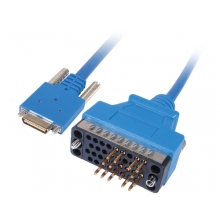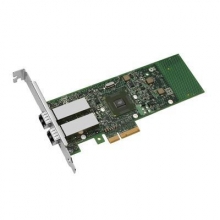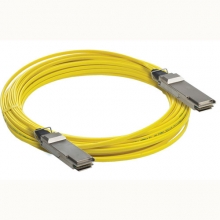- Optical Transceivers
- SFP+ Transceivers
- XENPAK Transceivers
- XFP Transceivers
- X2 Transceivers
- SFP Transceivers
- Compatible SFP
- 3Com SFP
- Alcatel-Lucent SFP
- Allied Telesis SFP
- Avaya SFP
- Brocade SFP
- Cisco SFP
- D-Link SFP
- Dell SFP
- Enterasys SFP
- Extreme SFP
- Force10 SFP
- Foundry SFP
- H3C SFP
- HP SFP
- Huawei SFP
- Intel SFP
- Juniper SFP
- Linksys SFP
- Marconi SFP
- McAfee SFP
- Netgear SFP
- Nortel SFP
- Planet SFP
- Q-logic SFP
- Redback SFP
- SMC SFP
- SUN SFP
- TRENDnet SFP
- ZYXEL SFP
- Other SFP
- FE SFP
- GE SFP
- OC3 SFP
- OC12 SFP
- OC48 SFP
- Copper SFP
- CWDM SFP
- DWDM SFP
- BIDI SFP
- Fiber Channel SFP
- Multi-Rate SFP
- SGMII SFP
- Compatible SFP
- GBIC Transceivers
- Passive Components
- Networking
- Cables
- Equipments
- Tools
- Special Offers


Looking back at 50 years of lasers development
The first laser light May 16, 1960 at Hughes Research Lab in Malibu, California Theodore Maime occurs when its device the size of a fist that rises bright red spot turned to a photo-detector. Since then, lasers have smaller, more effective and pervasive in modern art.
This weekend is the 50th Anniversary of the invention of the first working laser. Today, lasers are found almost everywhere, from telephone lines to the latest scientific discoveries, supermarket scanners, and even toys for cats.
The first laser light May 16, 1960 at Hughes Research Lab in Malibu, California Theodore Maime occurs when its device the size of a fist that rises bright red spot turned to a photo-detector. Since then, lasers have smaller, more effective and pervasive in modern art.
“This is the invisible wheel. We take for granted today,” said Tom Baer, director of the Photonics Research Center, Stanford, Palo Alto, California. “Half of U.S. [] Product GDP was greatly influenced by the laser “.
Lasers had a particularly strong impact on IT. revolutionized sending data using laser light to digital signals over fiber optic data transfer. The IBM Roadrunner, the supercomputer second fastest in the world has more than 45,000 lasers to send data on their 133,000 processor cores used. Just make fiber optics the backbone of the Internet as almost all data is transmitted by optical fibers.
“Especially now, our entire economic infrastructure to information is sent over fiber laser,” said Baer. “If you stop all the laser, it would cripple our economy.”
Other sectors of the economy have been hit. CD, DVD and Blu-ray use any laser to read the information encoded on them. Laser cutting and welding torch play an important role in the production and processing of goods. LASIK is less painful and invasive than conventional surgery. Researchers also believe that the use of a process the laser-scanning DNA, the future core technologies, to decode the human genome to a case may be.
However, it has not always been so. In 60 years, D’Irnee Haenens, assistant Maime, often to the invention as “a solution looking for problem.” The product of basic research, nobody really knew how to make the laser into a practical application.
“It took a long time before this issue has hardly more than academic interest”, Jeff Hecht, author of several books say about the history of lasers and optics.
Several research teams around the world competed to design and build the first working laser. Shortly after its completion Maime laser, researchers in other labs have managed to build their own. These early lasers were powerful enough to blow holes in the metal, which compete when an arms race between teams to build the most powerful laser shot. The team measured the power of these lasers start on the number of Gillette razor blades, that the radiation was founded would pull through.
‘Since the production of this laser was easier, people began searching for them for other purposes, “said Hecht.
The development of different types of lasers moved shortly after its invention. The researchers have produced lasers that uses a variety of materials such as helium-neon gas, carbon dioxide, and semiconductor diodes.
With the development of new laser came the first attempt Tour in commercial applications
. The first “proof of concept that lasers could be used medically was in 1961 when Charles Campbell and Charles Koester uses a laser to destroy the tumor eye of a patient. In 1965, James Russell has developed the first laser disc, a precursor of laser discs and compact modern.
As soon as may be small and sustainable mass production of laser diode, starting in the 70s, commercial applications came quickly. A bar code scanner to read the supermarket price of a pack of Wrigley’s chewing gum in 1974. laser discs and consumer CD debuted in 1978, came two years later, and the implementation of the first transatlantic fiber cables for international telephone calls were placed in 1988.
“I think the laser has revolutionized many in scientific research,” C. Kumar Patel, CEO of the company said laser spectroscopy Pranalytica Santa Monica, California. Patel invented the first laser CO2 1963rd “I am very, very few scientific studies that do not use these days of lasers, one way or another, “said Patel.
Since its invention, 15 Nobel prizes have been used in laser physics as an essential element. In 1997, the Energy Secretary Steven Chu – then a researcher at Stanford University – a Nobel Prize for his work has been assigned by using lasers to trap light and clouds of atoms cooled to a fraction of a degree above zero.
Last year’s launch of the National Ignition Facility at Lawrence Livermore National Labs in California shows how laser could provide cheap energy in the future. The researchers hope to make a sustainable fusion reaction of 192 most powerful laser in the world that shines on a small pellet of hydrogen. The amount of energy should be larger than what it takes to solve the reaction, a difference that researchers hope to one day use has increased.
“Scientists and engineers are looking how to do better, and just things that have never done before,” said Patel. “The invention and development of lasers as a purely scientific and for a long period began as a scientific activity … It takes time for an invention of mature and contribute to the nationwide economic engine. “



















































